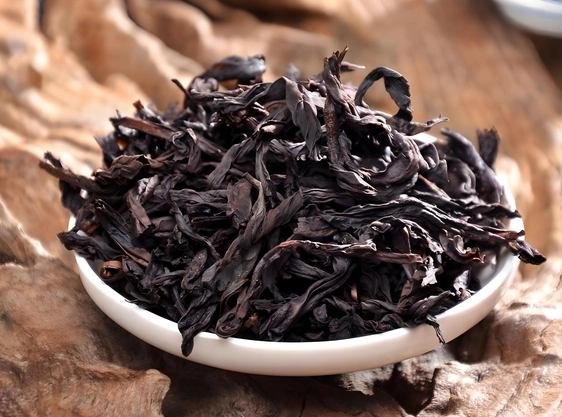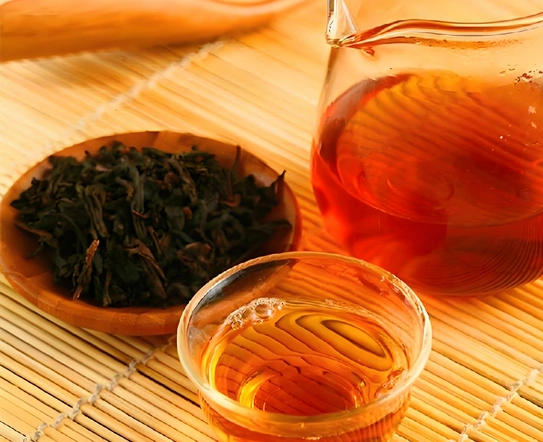The Allure of Aged Oolong Tea
Aged oolong tea is not just a drink—it’s a sensory journey, a ritual of patience, and a treasure chest of evolving flavor. From the very first sip, its rich, roasted aroma and deep, mellow undertones envelop you like an old, comforting memory. For tea lovers and seekers of depth in flavor, aged oolong tea offers a rare experience that only time and craftsmanship can deliver.
Unlike fresh teas that sing with youth, aged oolong tea whispers stories aged in clay jars and toasted gently over years. With every infusion, this dark amber elixir reveals new layers—earthy, woody, sometimes caramel-sweet, sometimes smoky. It’s a luxurious indulgence for those seeking balance, warmth, and mindfulness.
Whether you’re a connoisseur or a curious explorer, aged oolong tea invites you to slow down and savor. Let’s uncover what makes this premium tea so captivating, its health benefits, how it compares to other teas, and how to select the best aged oolong for your unique taste.

What Is Aged Oolong Tea?
Aged oolong tea refers to oolong that has been stored and carefully re-roasted over several years to develop deeper flavors. Originating mainly from Taiwan and China’s Fujian province, aged oolong is prized for its complexity and mellow character.
Unlike green or fresh oolong teas, aged varieties are typically medium to heavily oxidized and undergo periodic re-baking. This process preserves the tea and transforms its flavor profile over time, turning fruity and floral notes into roasted, earthy richness.
The Art of Aging Oolong Tea
Aging oolong tea is a delicate dance of time, temperature, and storage environment. The process begins with high-quality, well-roasted oolong—often from varieties like Wuyi rock oolong tea or Anxi Tieguanyin.
These teas are sealed in breathable containers, stored in cool, dry places, and re-roasted every 2–3 years to prevent moisture buildup and mold. This aging journey can span a decade or more, with flavors intensifying and mellowing into a smooth, almost wine-like character.
Skilled tea masters determine the precise intervals for roasting and resting, ensuring that the tea’s soul matures rather than diminishes.

Flavor Profile of Aged Oolong Tea
Aged oolong tea is renowned for its full-bodied, comforting taste. Its profile often includes:
- Toasted nuts
- Warm wood
- Dried fruit
- Earthy mineral tones
- Hints of caramel or honey
The aroma is hypnotic—like standing in an ancient teahouse filled with cedar, smoke, and subtle sweetness. Each steep reveals new dimensions, making aged oolong tea a favorite among meditative tea drinkers and collectors alike.
Health Benefits of Aged Oolong Tea
Beyond its captivating taste, aged oolong tea is also praised for its holistic wellness effects. Here’s how it nurtures your body and mind:
- Gentle caffeine boost without jitters—ideal for morning focus.
- Rich in polyphenols, which support heart health and immune function.
- Aids digestion—especially beneficial when enjoyed after heavy or oily meals.
- Supports mental clarity and calmness, making it perfect for stress relief.
- Acts as a coffee alternative for those seeking a softer stimulant with rich depth.
Compared to fresh oolong or green tea, aged oolong is often easier on the stomach and less acidic—perfect for tea drinkers with sensitivities.
Aged Oolong Tea vs. Other Teas
How does aged oolong tea compare with other beloved tea types?
| Tea Type | Flavor Notes | Caffeine | Best Time to Drink |
|---|---|---|---|
| Aged Oolong Tea | Roasted, mellow, deep | Moderate | Midday or after meals |
| Green Tea | Fresh, grassy, vegetal | Low | Morning or early afternoon |
| Black Tea | Bold, malty, sometimes smoky | High | Morning |
| Premium Oolong Tea | Floral, creamy, toasted | Moderate | Afternoon relaxation |
Aged oolong stands out for its layered richness, making it a top choice for reflective moments and slow sipping.
How to Brew Aged Oolong Tea
To unlock its full character, aged oolong should be brewed with care:
- Use clay or porcelain teaware to preserve warmth.
- Rinse the leaves briefly with hot water.
- Brew at 95°C (203°F) for 30–60 seconds per infusion.
- Enjoy up to 6–10 steeps—each with its own nuance.
Pro tip: aged oolong tea often tastes better with slightly longer steeping in later rounds, allowing the dense, aged leaves to open fully.

🔗 To learn more about how to brew aged oolong tea, watch Tbiwencha’s YouTube video that explains how to brew the tea
Best Aged Oolong Tea to Try First
If you’re new to aged oolong, these options offer great introductions:
- 20-Year Aged Wuyi Oolong: Deep, smoky, and legendary.
- 10-Year Anxi Tieguanyin: Smooth, floral, with gentle fire-roast.
- High Fire Oolong Tea: Roasted to perfection, ideal for winter evenings.
Look for vendors that store their teas properly and offer clear harvest dates and aging history. Transparency ensures you’re not just drinking old tea—but authentically aged oolong.
Final Thoughts: Why Aged Oolong Tea Is Worth Discovering
Aged oolong tea is more than a beverage—it’s an experience aged to perfection. From its soul-soothing flavor to its body-calming benefits, this timeless drink is a gift to the senses. Whether you’re seeking balance after a long day, a substitute for your daily coffee, or simply a richer way to indulge in tea culture, aged oolong delivers.
Let every sip ground you in the present—and take you on a journey through time.



